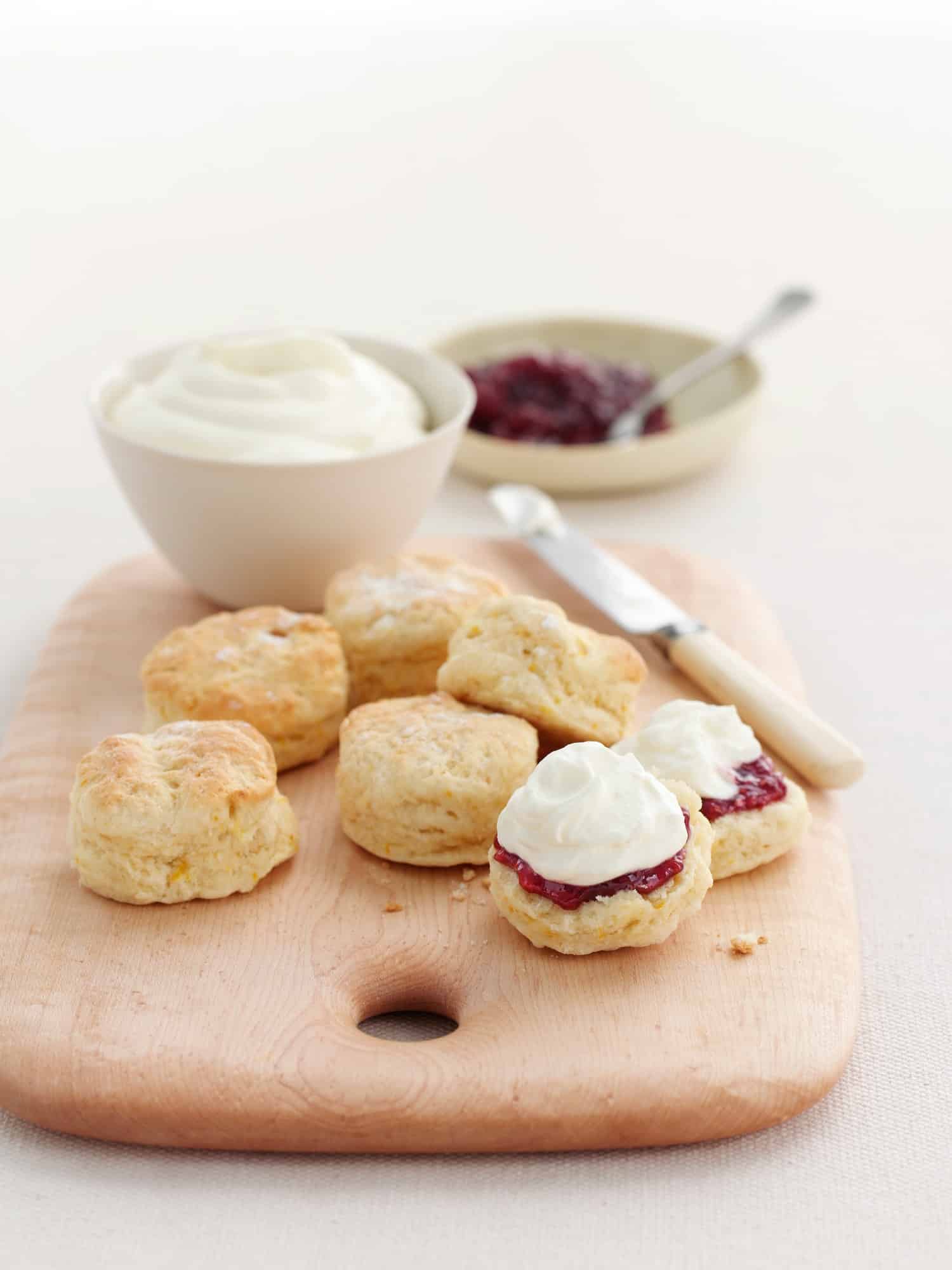Picture this: a fine sunny afternoon in Los Angeles. You’re sitting in a quaint little restaurant, a hot cup of tea in hand, waiting for the day’s special—gourmet scones served with decadent clotted cream and jam. The anticipation of the first bite is enough to make your taste buds tingle. But what if you could recreate this experience at home? Better yet, what if we told you that you could master the art of making these gourmet scones? Intrigued? Let’s dive in!
West London’s Scones Meet Los Angeles’ Finest Chefs
A scone, quite reminiscent of afternoon tea sessions in West London, has found a place in the heart of Los Angeles’ food scene. Thanks to the talented chefs who have embraced this British classic with open arms, there’s no shortage of places in the City of Angels where you can enjoy a splendid scone with a cup of tea.
A lire aussi : Can You Create a Gourmet Pasta Alfredo with Homemade Fettuccine and Rich Sauce?
Our journey begins here, in the bustling restaurants of Los Angeles, where the chefs weave their magic to bring the best scones to your table. With the perfect balance of flaky and soft, lightly sweetened or accented with a hint of savory, these scones are a treat to the taste buds. Let’s not forget the clotted cream and jam, the proverbial cherry on top, bringing all the flavors together.
The Secret Behind a Perfect Scone
The key to a perfect scone lies in the touch of the hand and the choice of ingredients. A light touch ensures your scone is flaky and tender rather than heavy and dense. The right ingredients, on the other hand, are a game-changer, especially when it comes to the flour, the fat, and the add-ins. The choice of flour can impact the texture of your scone. While a high-protein flour may make your scone tough, a low-protein flour can make it crumbly. The fat you choose plays a pivotal role too. Butter gives flavor, shortening gives tenderness, and cream gives richness.
A lire également : What Techniques Can Transform a Basic Roast into a Gourmet Dish with a Wine Reduction?
It’s not just about the scone though, clotted cream and jam demand just as much attention. The rich, indulgent clotted cream coupled with the tangy sweetness of the jam, sparks a culinary explosion in your mouth, making your afternoon tea experience truly unforgettable.
Courtesy of the Best: Tips from Top Chefs
Some of Los Angeles’s best chefs have been kind enough to share their wisdom with us. Armed with these tips, you’ll be well on your way to mastering the art of making gourmet scones.
First off, always keep your ingredients cold, especially your fat. This ensures that when the scones bake, the fat melts, creating steam pockets that result in a flaky texture. Secondly, avoid overworking your dough. The more you work it, the more you develop the gluten in the flour, resulting in a tougher scone.
When it comes to the clotted cream and jam, consistency is key. Your clotted cream should be thick and velvety, and your jam should be glossy and hold its shape. Most importantly, always taste as you go along. Adjust the sweetness of your jam or the richness of your cream to suit your preference. After all, the perfect scone is one that’s perfect for you.
From Twitter to Your Kitchen: Scone Recipes That Went Viral
In today’s digital times, the world of food has found a new platform on Twitter. It’s not uncommon to see a recipe go viral, with thousands of food enthusiasts trying it out and posting their renditions of it. One such recipe is the classic scone recipe that has found many takers.
These viral Twitter recipes make the task of baking scones seem much less daunting. Broken down into simple steps, they take you through the entire process, from start to finish. If you’ve always been hesitant about baking scones at home, these recipes might just be the confidence boost you need.
Don’t just stop at the scones though. Try your hand at making your own clotted cream and jam as well. Remember, the key to a perfect scone lies just as much in the toppings as it does in the scone itself. Be adventurous, be creative, and most importantly, have fun with it.
Scones: Not Just for Afternoon Tea
While traditionally associated with afternoon tea, scones have evolved to become a versatile treat fitting for any time of the day. From a quick breakfast on the go to a late-night snack, these delightful rounds of joy can be adapted to suit any occasion.
So, why restrict yourself to only afternoon tea? Experiment with different flavors and add-ins. Make a savory scone with cheese and herbs, or create a dessert scone with chocolate and dried fruit. The possibilities are endless, and the results, always delicious.
And there you have it. A detailed guide to mastering the art of making gourmet scones, filled with expert tips, popular recipes, and a whole lot of motivation for you to get started. So, grab your apron and your mixing bowl, and let’s get baking!
Scones and Seasons: Choosing the Best Ingredients Year-Round
Mastering the art of making gourmet scones includes understanding the importance of seasonal ingredients. Each season brings its own bounty of produce, and incorporating these into your scones can take them to new, exciting heights.
In the colder months of January, February, and March, citrus fruits like oranges, lemons, and grapefruit are at their peak. These can add a refreshing zing to your scones and pair wonderfully with a dollop of clotted cream. As we transition into spring in April and May, strawberries start to ripen, making for a deliciously tangy and sweet jam.
The summer months of June, July, and August bring an abundance of fresh berries – raspberries, blueberries, and blackberries, perfect for a rich, fruity jam to accompany your scones. September and October bring the harvest of apples and pumpkins, ideal for a spiced scone or a hearty jam. Finally, as the year winds down in November and December, classic flavors like cinnamon, nutmeg, and ginger can be used to create a festive, holiday-inspired scone.
Choosing the right fats for your scones is just as crucial. While butter is a popular choice, don’t shy away from experimenting with olive oil, which can lend a unique, savory flavor to your scones. Remember, always use cold fat to achieve that desired flaky texture.
Concluding the Scone Saga: It’s Time to Bake
Armed with your newfound knowledge, it’s time to master the art of making gourmet scones. With every season bringing a new assortment of ingredients to play with, this journey never truly ends. It’s a cycle of endless exploration, filled with exciting flavors and tantalizing textures.
Whether you’re preparing for a traditional afternoon tea or venturing into new culinary territories with savory scones, remember to keep your technique flawless and your ingredients fresh. The perfect scone is a balance of a light, flaky exterior and a soft, moist interior, served with a generous helping of clotted cream and jam.
Making scones, like any other culinary endeavor, requires practice. But don’t be disheartened if your first batch doesn’t turn out as expected. Learn from it, tweak your technique, adjust your ingredients, and soon enough, you’ll be making scones that would make any Los Angeles chef proud.
So, go forth and bake! Whether it’s a sunny June afternoon or a cozy December evening, there’s no wrong time for a scone. May your scones always be light, your clotted cream rich, and your jam, a perfect balance of sweet and tangy. Here’s to mastering the art of making gourmet scones at home. Happy baking!










